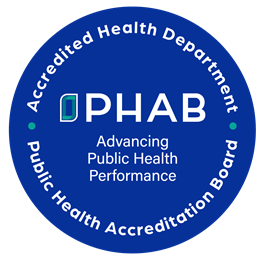Ground water can contain a wide variety of both naturally-occurring and man-made minerals and chemicals. Some of these can impart tastes and odors, cause staining of fixtures, or even leave sediments while others are undetectable without testing.
Recommended Water Quality Testing for New Wells
The NYS Department of Health has developed general water quality testing guidelines to assist private well owners. (see "Individual Water Supply Wells - Fact Sheet #3") These recommendations are for common minerals and contaminants that are most likely to impact your water quality. This suite of testing is recommended for all new water wells and is required for when obtaining Housing & Urban Development (HUD) mortgages.
Common Groundwater Contaminants
Below is a list of common contaminants that are most likely to impact your water quality. Typically excessive amounts of these contaminants can be addressed with standard water treatment equipment. (see "Water Treatment Systems")
- Coliforms - A type of bacteria that indicate your water supply's susceptibility to disease causing organisms. Coliform testing is the single most important water quality test you can perform and is often used as the standard for potability. (see "Waterborne Illness & Disinfection")
- Lead & Copper- Common metals sometimes found in older pipes and water fixtures. The use of lead in water pipes, solder and fixtures was banned in the US in 1998. Copper pipe is still used today, but most new construction uses flexible plastic pipe instead. Ingestion of lead can cause brain, nerve and kidney damage. Children are particularly vulnerable and may suffer from developmental disorders as a result of exposure. (see "Lead Hazard Control") Copper is much less toxic than lead, but can cause kidney & liver damage to children and acute gastrointestinal distress in high levels.
- Nitrate & Nitrite - Naturally occurring organic compounds that are important nutrients for plants. Nitrate & nitrite pollution is generally associated with sewage disposal systems and poor agricultural practices. At very high levels these compounds can be dangerous, especially to pregnant women and infants (blue baby syndrome).
- Iron - A common metal that is leached from bedrock by groundwater. Dissolved iron causes orange staining on fixtures and clothing. High levels of iron will impart a rust color to the water and possibly a metallic taste. Iron is not considered a health hazard even at high levels but can make your water unpalatable.
- Manganese - A common metal, chemically similar to iron, that is leached from bedrock by groundwater. Manganese leaves a black residue in toilet tanks, black flakes in your water and may stain clothing. Like iron, manganese is not considered a health hazard even at high levels but can make your water unpalatable.
- Arsenic - Arsenic is a naturally occurring toxic chemical element which is widely found throughout the earth's crust in soil, rocks and minerals. It is also a by-product of certain agricultural and industrial processes. It is odorless, tasteless, and colorless when dissolved in water (even at high levels) and can only be detected via chemical testing. (see Arsenic in Drinking Water Frequently Asked Questions)
- Sodium - A common metal associated with salt pollution and water softeners. In general, sodium is not considered hazardous but may pose a problem for people on a restricted sodium diet for high blood pressure.
- Hardness - A measure of dissolved minerals in your water. Hard water can slowly deposit dissolved minerals inside your water system causing a range of maintenance problems (seized valves, reduced pipe diameter, plugged screens and shower heads, etc.) and can reduce the effectiveness of soaps. This deposition is commonly called "lime scale" when found in appliances and on dishware. It is not considered a health hazard even at very high levels but many people find it objectionable and install water softeners to reduce it.
- Hydrogen Sulfide - A common gas created by chemical reactions in soil and rocks containing sulfur, or by certain types of anaerobic bacteria. Hydrogen sulfide is often described as having a "rotten egg" odor that is easily detectable at very low concentrations. It is not considered a health hazard at levels commonly found in drinking water but can make your water unpalatable.
Secondary Water Quality Parameters
These water quality parameters represent the general conditions of your water. With the exception of turbidity, they are not likely to impact your water quality directly. However, they are important when selecting treatment methods for other contaminants and may also have maintenance implications. Many water treatment systems have ranges of operation for these parameters and pre-treatment may be necessary depending on your results.
- Turbidity - A measure of the "cloudiness" of your water caused by suspended particles, similar to smoke in air. High turbidity is typically associated with pollution by sediments and is most common in surface water sources and springs. It is not considered a health hazard by itself, but can reduce the effectiveness of chlorine and ultraviolet disinfection. (see "Waterborne Illness & Disinfection")
- pH - A measure of the corrosivity of your water; whether it is acidic or basic. Corrosive water can dissolve metals in your water system causing maintenance issues (bad impellers in pumps, burst pipes, etc.). If your water is highly corrosive, it may also cause magnesium corrosion protection rods in your hot water tank to give off hydrogen sulfide gas. Additionally, some dissolved metals (i.e. lead & copper) are harmful when ingested.
- Total Alkalinity - A measure of the capacity of your water to neutralize acids (pH buffer capacity). Alkalinity influences many chemical processes including the effectiveness of chlorine as a disinfectant. In drinking water it is important to houseplants and fish tanks as well as when balancing water used in pools and hot tubs. Alkalinity is not considered a health hazard at any concentration, although very high levels may impart a metallic-bitter taste that some people find objectionable.
Water Quality Testing for Other Contaminants
If you are experiencing water quality problems, you must determine what parameters to test for. Unfortunately, there is no "general" test that will give you a list of what is in your water. Instead, testing for each parameter must be performed separately.
The table below gives testing guidance for several different scenarios you may encounter. Note that many of the recommended water quality tests in this table are already included in the suite of testing above for new wells.
|
Conditions or Nearby Activities: |
Test For: |
|---|---|
|
Recurring gastro-intestinal illness1 |
Coliform bacteria, e-coli |
|
Older household plumbing may contain lead (pre-1998) |
pH, lead, copper |
|
Corrosion of pipes, plumbing |
pH, lead, copper |
| Nearby areas of intensive agriculture | Nitrate, pesticides, arsenic, coliform bacteria |
| Coal or other mining operations nearby | Metals, pH |
| Gas or oil drilling operations nearby | Sodium, chloride, barium, strontium |
|
Dump, junkyard, landfill, factory, gas station, or dry-cleaning operation nearby |
Volatile organic compounds, total dissolved solids, pH, sulfate, chloride, metals |
| Odor of gasoline or fuel oil, and near gas station or buried fuel tanks | Volatile organic compounds |
| Objectionable taste or smell | Hydrogen sulfide, pH, metals |
| Stained plumbing fixtures, toilet tanks or laundry | Iron, copper, manganese, hardness |
|
Salty taste and seawater, or a heavily salted roadway nearby |
Sodium, chloride, total dissolved solids |
|
Scaly residues, soaps don't lather |
Hardness |
|
Rapid wear of water treatment equipment |
pH |
|
Water softener needed to treat hardness |
Hardness, manganese, iron |
|
Water appears cloudy, frothy, or colored |
Color, detergents, turbidity, total dissolved solids |
|
Reddish-brown films on fixtures or toilet tanks |
Iron bacteria, iron, manganese |
The Environmental Protection Agency recognizes other contaminants not listed above that could be found in drinking water and has set maximum contaminant limits (MCLs) for them (see "EPA: Drinking Water Contaminants"). However, testing for these other contaminants is not recommended unless you have a reason to suspect their presence. Many of these other groundwater contaminants are associated with industrial activities and are only found in special circumstances.
Obtaining Water Testing Services
The Cattaraugus County Laboratory provides basic testing services important to public health (coliforms & nitrates). If you wish to have your drinking water tested through our laboratory, please contact the Environmental Health Division at (716) 701-3386. Our staff will direct you to the appropriate inspector to schedule an appointment. Alternatively, you may obtain a sterilized bottle at our lab and collect the sample yourself. Please note that false positive may occur if sampling procedures are not strictly followed. Non-residents may still utilize testing services at the laboratory, however sampling is not provided beyond County borders.
Water treatment suppliers will routinely perform testing for common contaminants like iron, manganese and hardness for little or no cost as part of their consultation. For most other types of water quality testing, you may need to contact a private laboratory (see NYS Certified Water Testing Laboratories).


